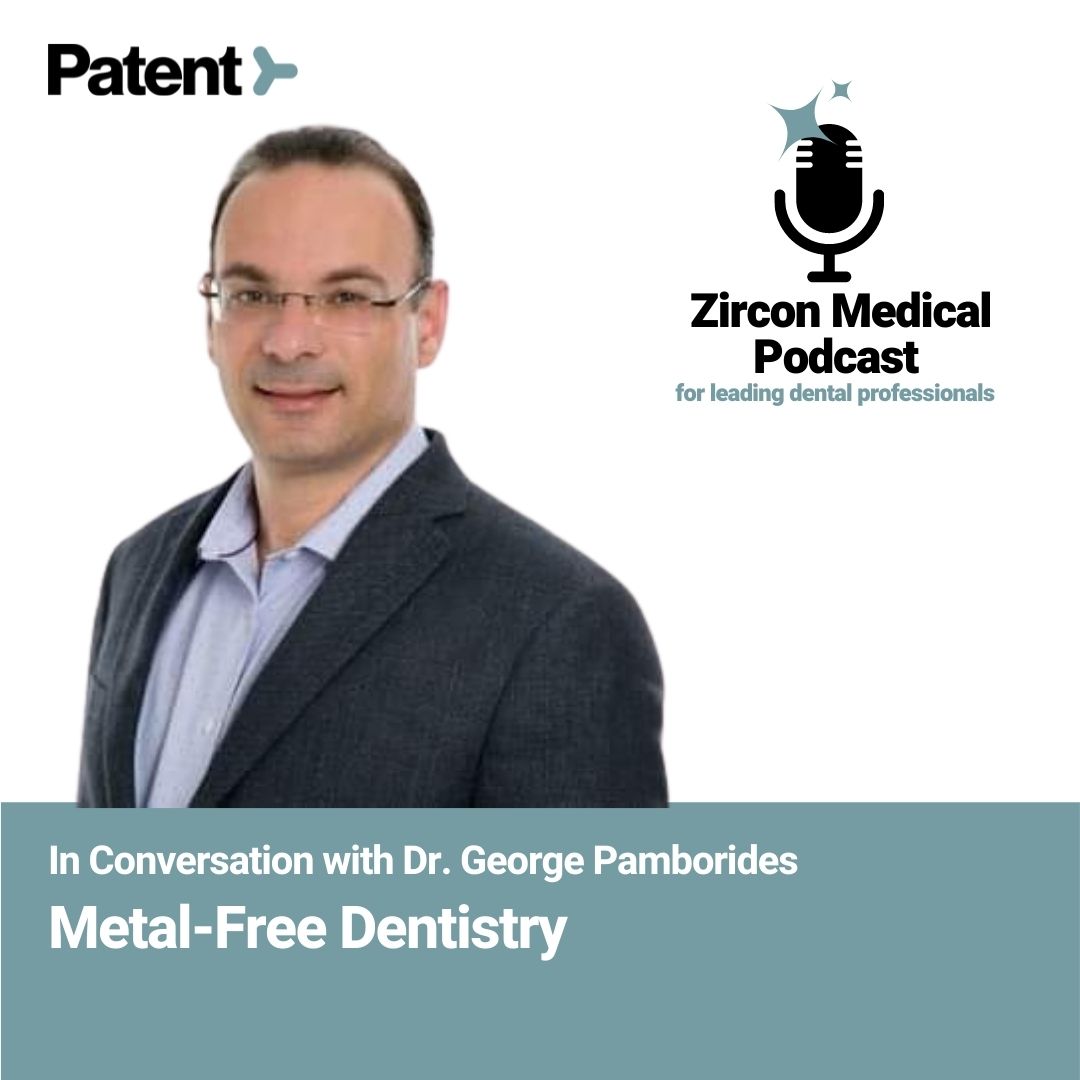Dr. George Pamborides
Co-Founder of the Nicosia Dental Clinic
Specializes in dental implants and advanced dental surgery
Studied dentistry at Semmelweis University in Budapest, Hungary
Associate Fellow of the American Academy of Implant Dentistry
Member of the International Academy of Ceramic Implantology (IAOCI)
Co-founded the Nicosia Dental Clinic, a premier Implantology practice in Nicosia
Personal Website: https://pamborides.dental/
Dental Clinic Website: https://www.nicosiadentalclinic.com/
Instagram: @georgepamborides
Facebook: https://www.facebook.com/Nicosia-Dental-Clinic-281440208559945/
LinkedIn: https://www.linkedin.com/in/george-pamborides-b1a96843/
Office 101 6 Georgiou Davari Strovolos 2024 Nicosia, Cyprus
In Conversation with Dr. George Pamborides
At this point, it’s clear that metal-free dentistry is the next stage in the evolution of dentistry. Ceramic implants, for example, have already proven to be safer and more effective alternatives to titanium implants. However, the medical community still has a long way to go to truly embrace metal-free dentistry and implantology in all of its forms.
Our team at Zircon Medical recently hosted Dr. George Pamborides, a member of the International Academy of Ceramic Implantology (IAOCI), on our podcast series to discuss metal-free dentistry and ceramic implantology.
Introducing Dr. George Pamborides, the co-founder of the Nicosia Dental Clinic
Dr. George Pamborides is currently the founder and leading dentist at the Nicosia Dental Clinic, the premier implantology practice in Nicosia. He specializes in dental implants and advanced dental surgery, is an Associate Fellow of the American Academy of Implant Dentistry, and is a member of the International Academy of Ceramic Implantology (IAOCI).
When asked when and why he chose to become a dentist, Dr. Pamborides answers that his late father was a lab technician, so he has always been familiar with dentistry. At the age of 16, he finally decided to become a dentist, and he hasn’t regretted that decision even once
Healthy mouth for a healthy body
The Nicosia Dental Clinic features the tagline “healthy mouth for a healthy body.” When asked about it, Dr. Pamborides says that they chose that tag line to foster the understanding that the mouth is an essential component of the body, that it’s the “entrance of the body.” The medical community generally acts as if the mouth is a separate organ not connected to the human body, and patients similarly treat the mouth as inconsequential.
“People always go to fix a broken arm or another part of the body,” Dr. Pamborides says. “But they often ignore a broken tooth and just take antibiotics or painkillers.” This is a common problem that dentists face across the globe — making patients understand the value of oral health. After all, oral problems can affect the rest of the body, so the value of a healthy mouth can’t be underestimated.
Dr. Pamborides says some of the younger patients seem better informed about the importance of oral health. He says that younger dentists, over the past two decades, have increasingly started inculcating the value of oral hygiene in young patients and parents. More and more people are now starting to take care of their teeth, which is a positive trend, but there’s still a long way to go.
Using both titanium and ceramic implants
Dr. Pamborides clearly states that he prefers ceramic implants and believes they’re superior to titanium implants. However, as of now, he is placing both titanium and ceramic implants for two essential reasons:
Ceramic implants can be fairly expensive for bigger restorations, such as full mouth restoration. They might be affordable or suitable for one or two implants, but not much more.
Titanium implants might be suitable for works related to dentures and hybrid jobs.
Platelet-rich plasma for optimal bone grafting
Dr. Pamborides says he prefers using an autologous procedure for bone regeneration. He follows the platelet-rich plasma (PRP) approach, wherein a sample of the patient’s blood is drawn and spun in a centrifuge to isolate the leukocytes and growth factors. The PRP is mixed with synthetic bone or the patient’s own bone and placed as grafting material in the patent’s mouth. According to Dr. Pamborides, autologous bone and blood are the gold standards in bone regeneration.
Dr. Pamborides says he always wets the ceramic implant in the PRP solution before placing it because it optimizes the healing process. Furthermore, the leukocytes in the solution reduce pain and discomfort. Patients are initially skeptical when they’re introduced to the concept of PRP for bone regeneration, but they quickly hop onboard once the benefits are explained to them.
Ceramic implants… 5 years from now
Dr. Pamborides says the ceramic implants are the natural evolution of dental implantology and then adds, “the evolution is already here, growing day by day.” It’s already established that ceramic implants are the ideal choice for patients. The biological response of ceramic implants is amazing — gums love ceramic implants. The bone tissue integration is also amazing.
And ceramic implants, unlike titanium implants, look and feel like a natural teeth. Even if the patient has a little gum recession, they’ll only have a little white or pinkish color, which can be fixed easily. They won’t have grey or black at the base. As such, Dr. Pamborides emphasizes that the future is already here — we simply need to spread awareness to the dental communities.
Advice for colleagues practicing ceramic implants
Dr. Pamborides says dentists and implantologists often treat ceramic implants as no different from titanium implants, leading to severe complications. He believes dentists seeking to place ceramic implants must go for live surgeries or practical sessions before placing ceramic implants. They have to treat ceramic implants more gently than they’d treat titanium implants.
You can find Dr. George Pamborides at his dental clinic in Nicosia, or you can follow him on LinkedIn, Facebook, or Instagram. You can also listen to him on our Zircon Medical podcast.
Register for our free newsletter.
Never miss one of our weekly episodes with leading dental professionals.












